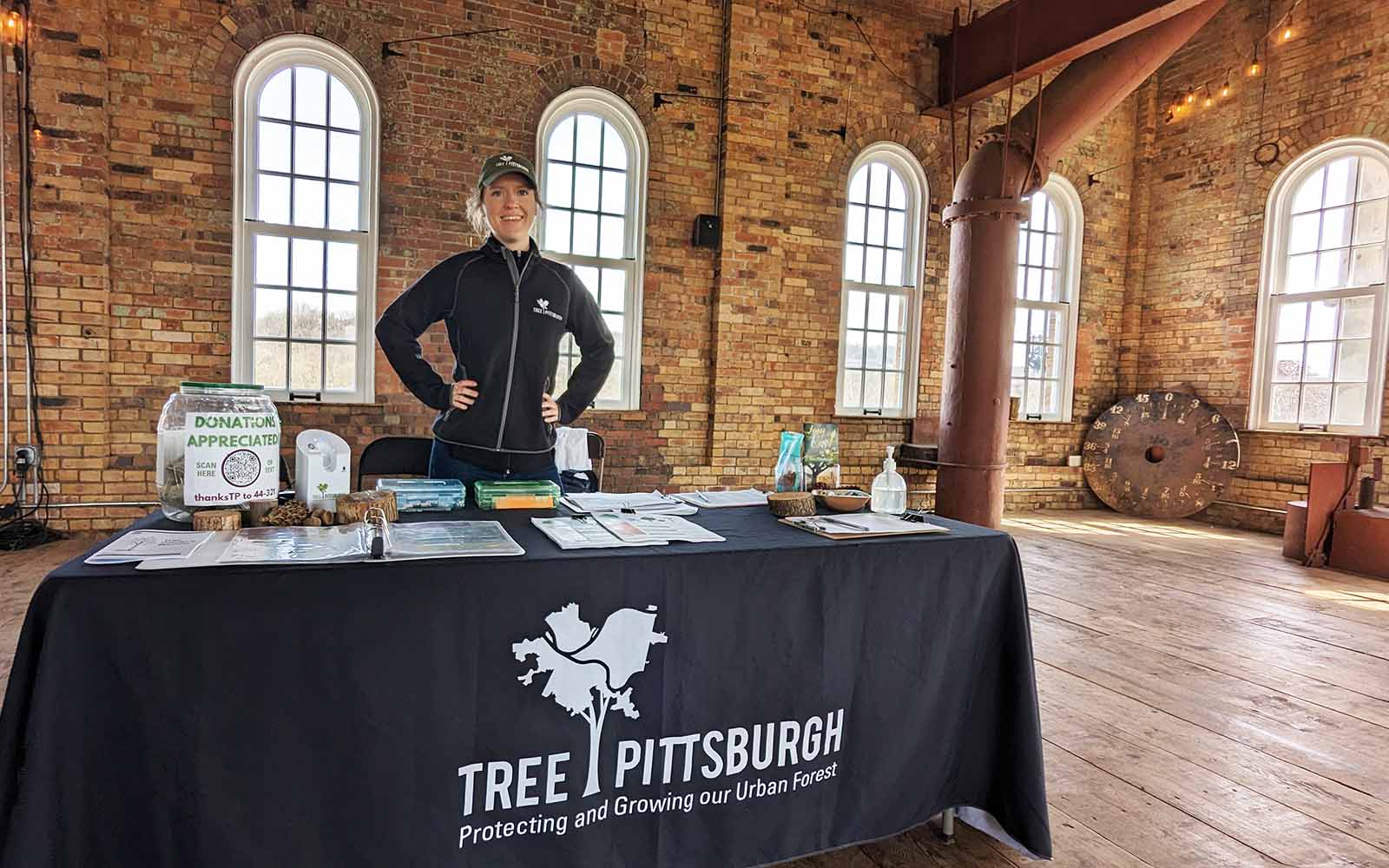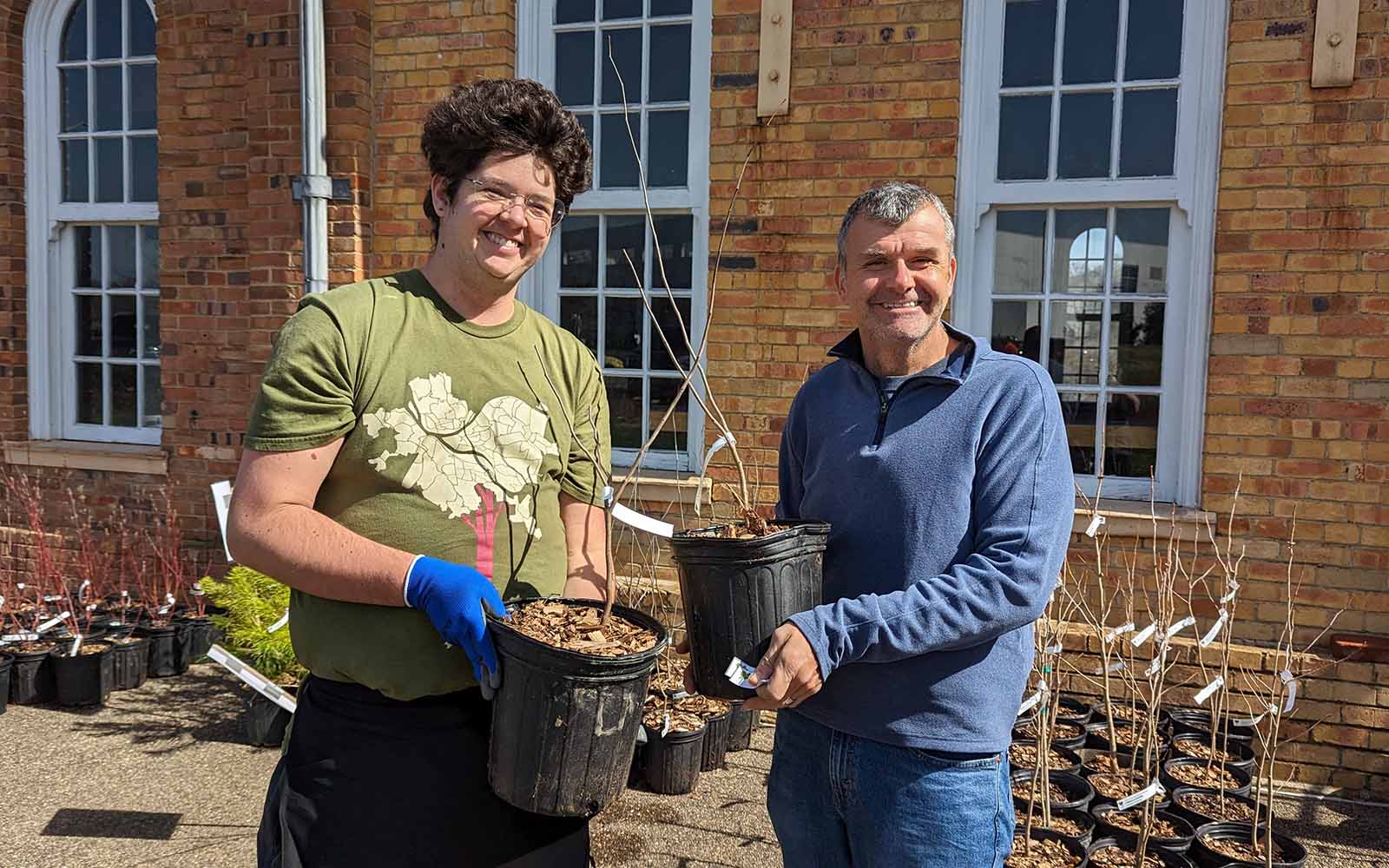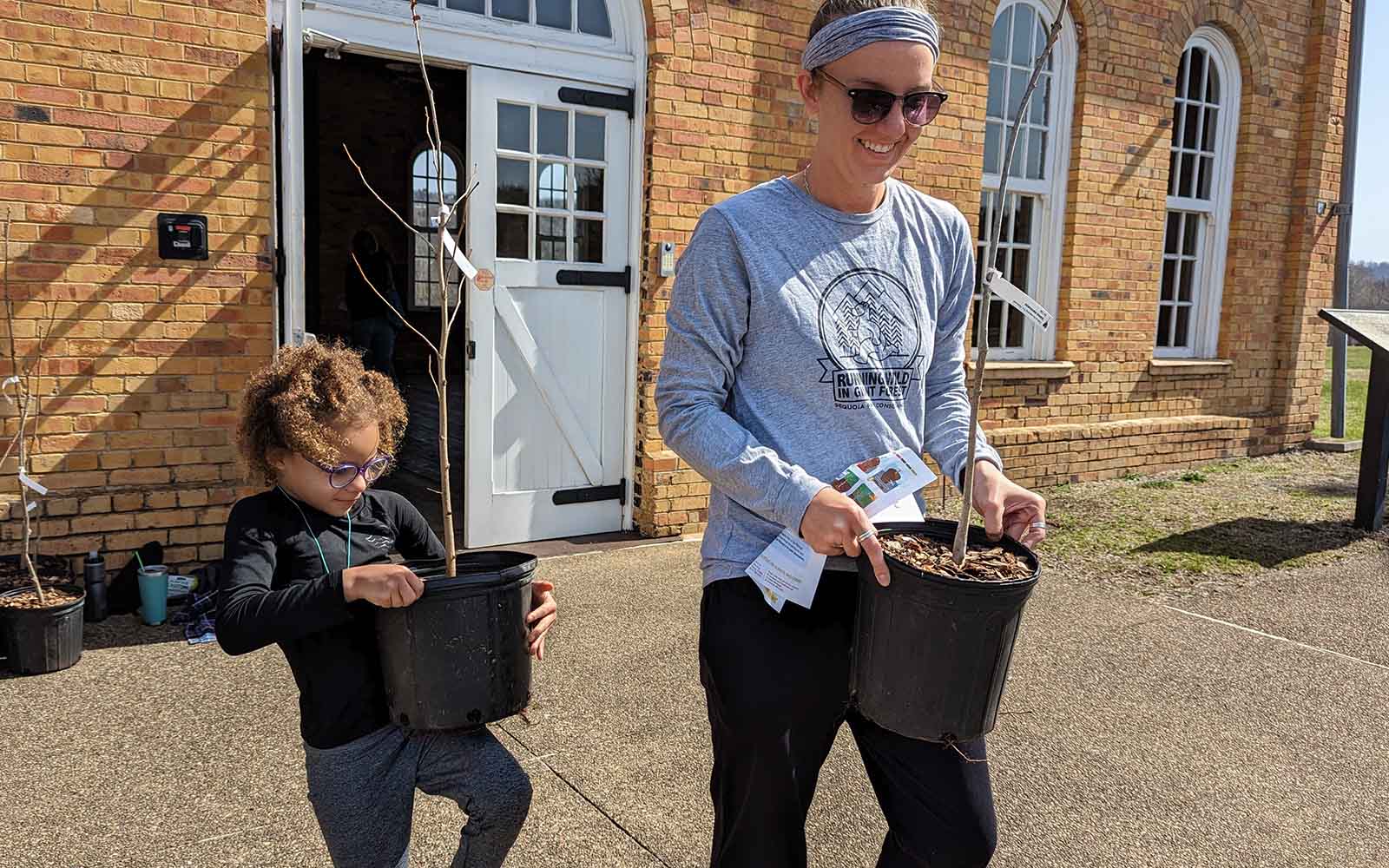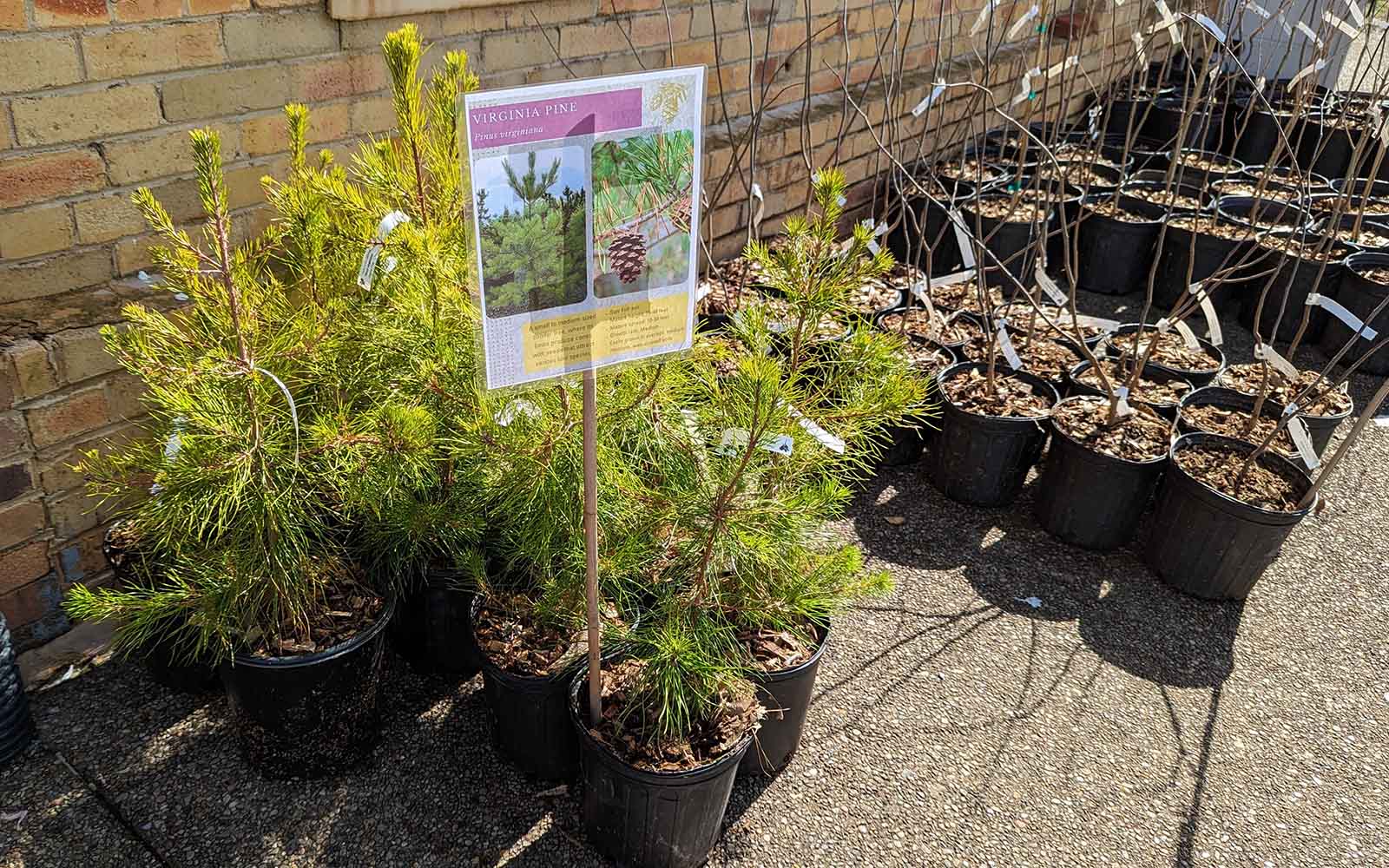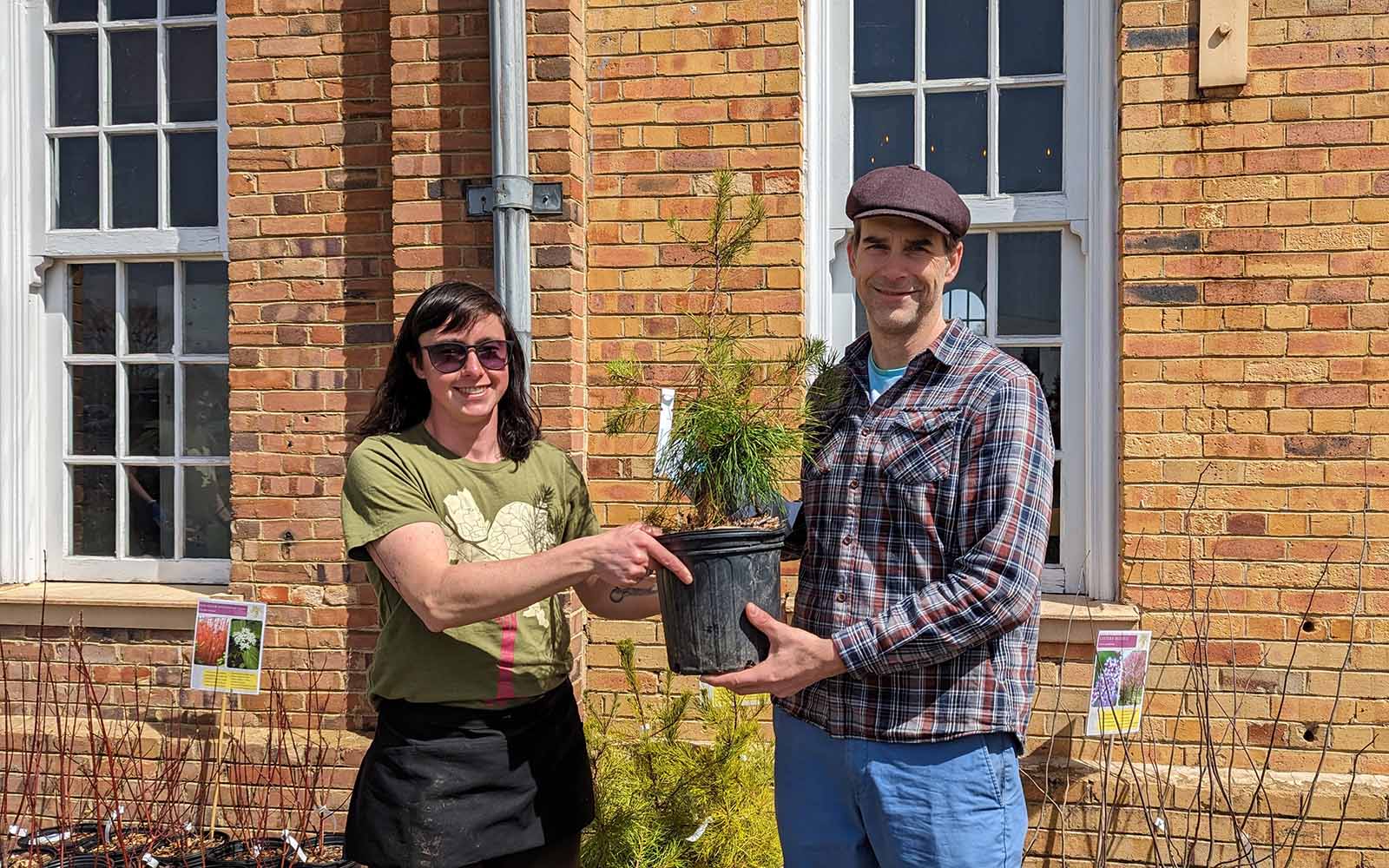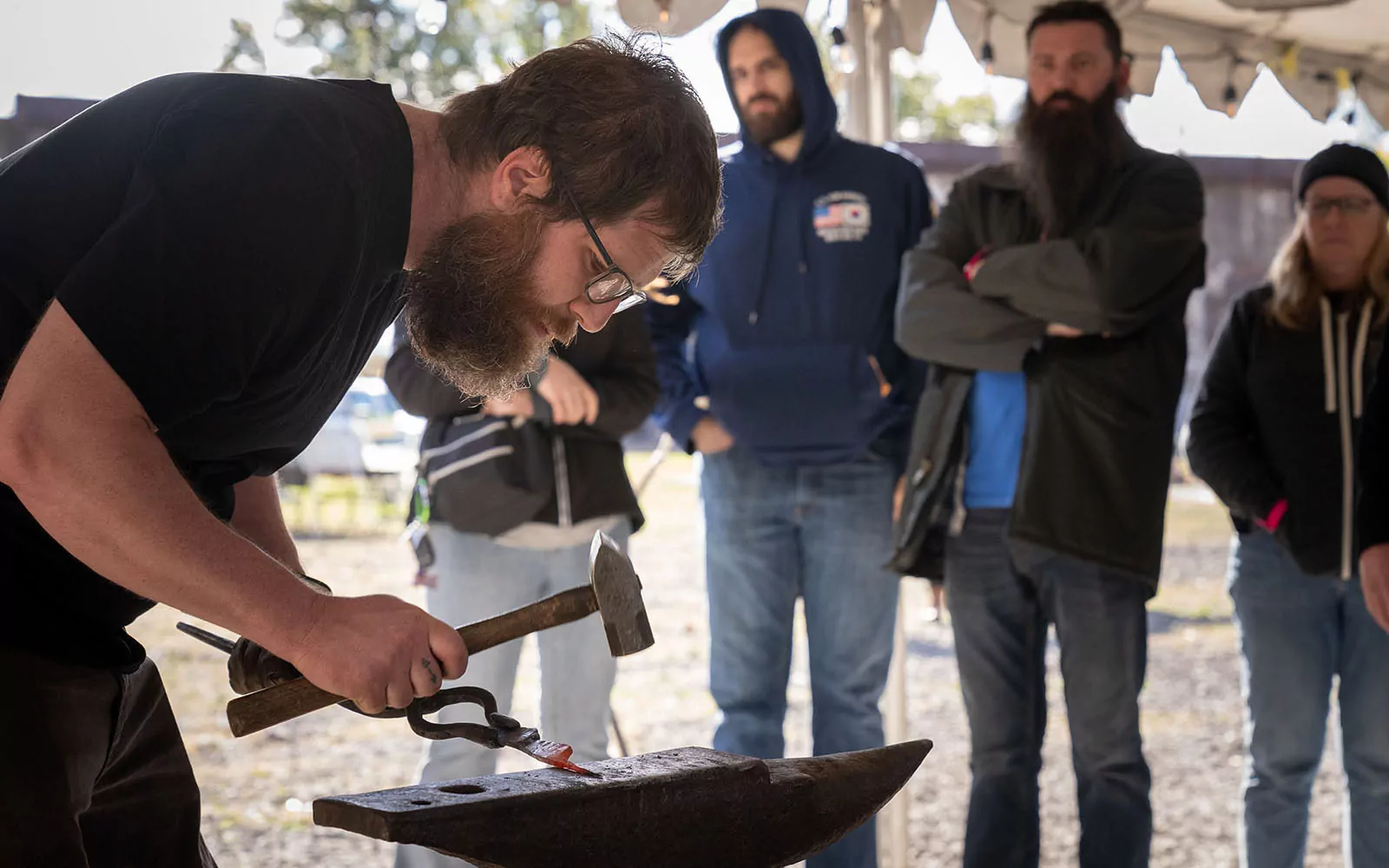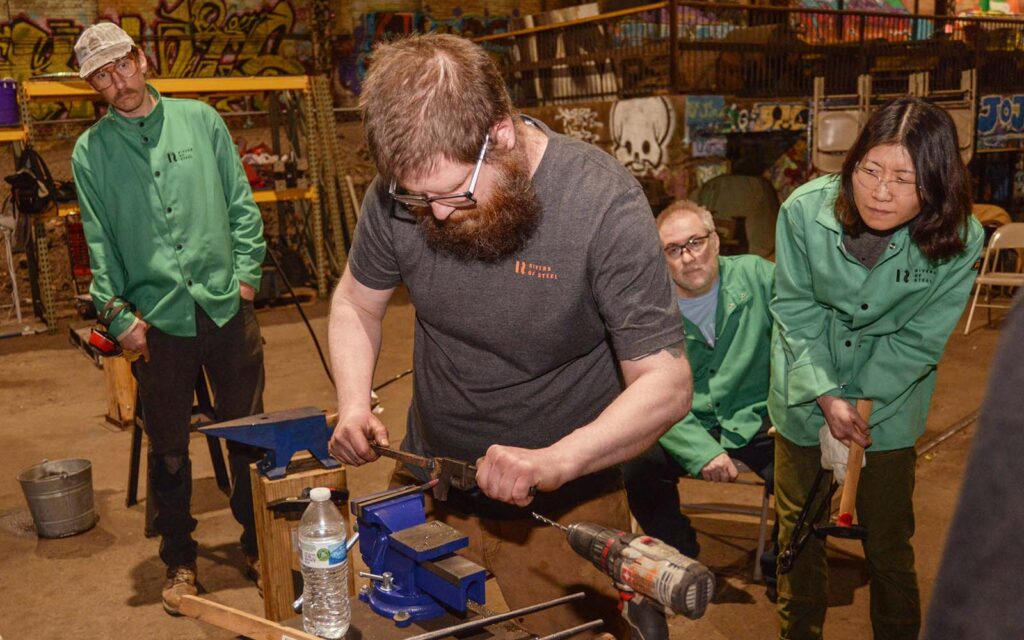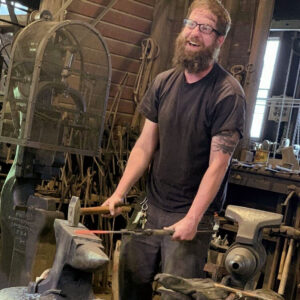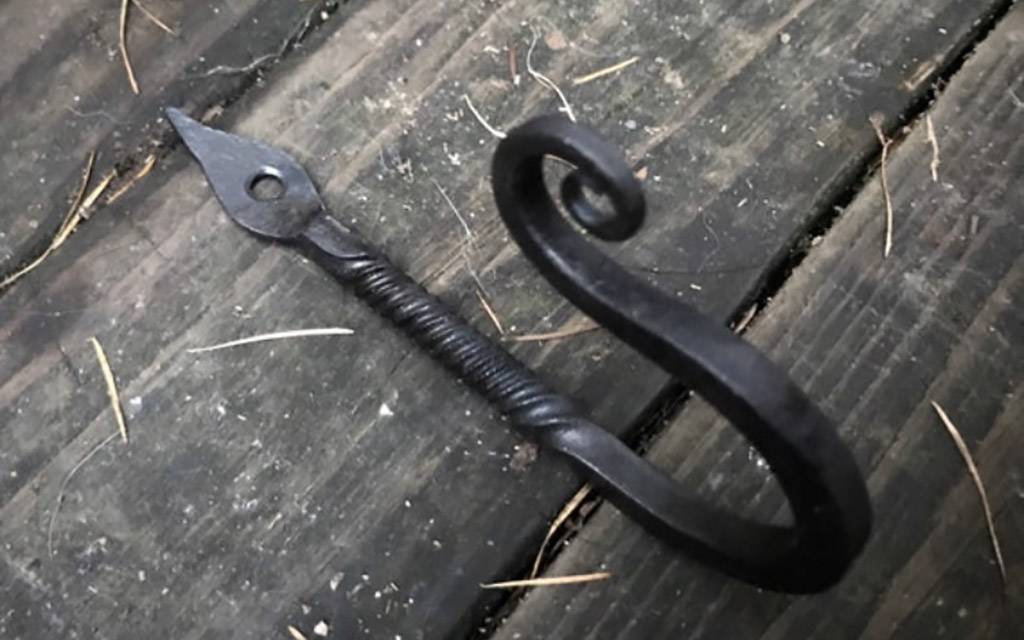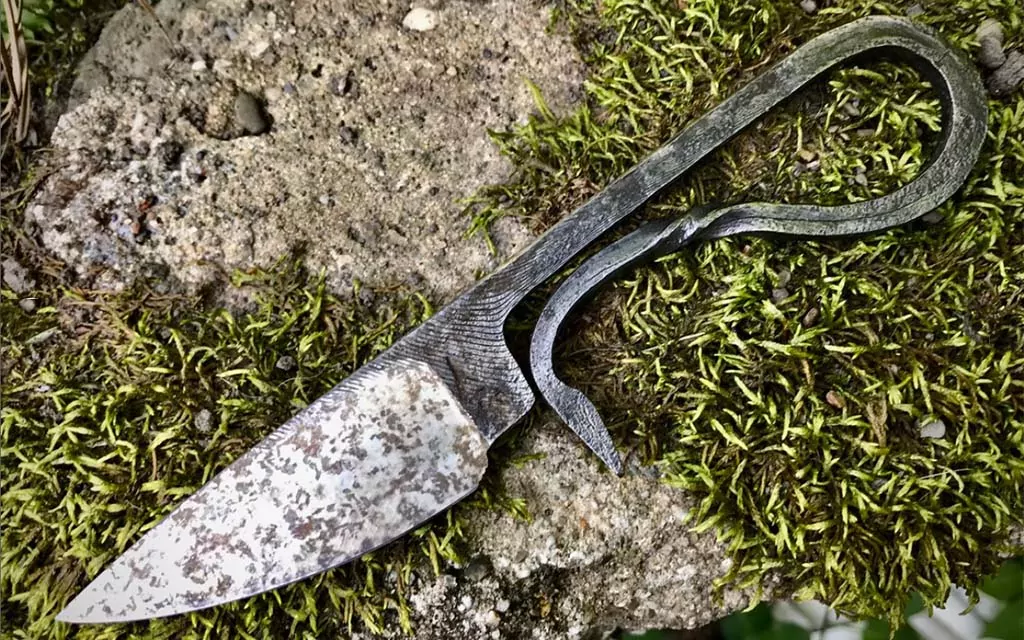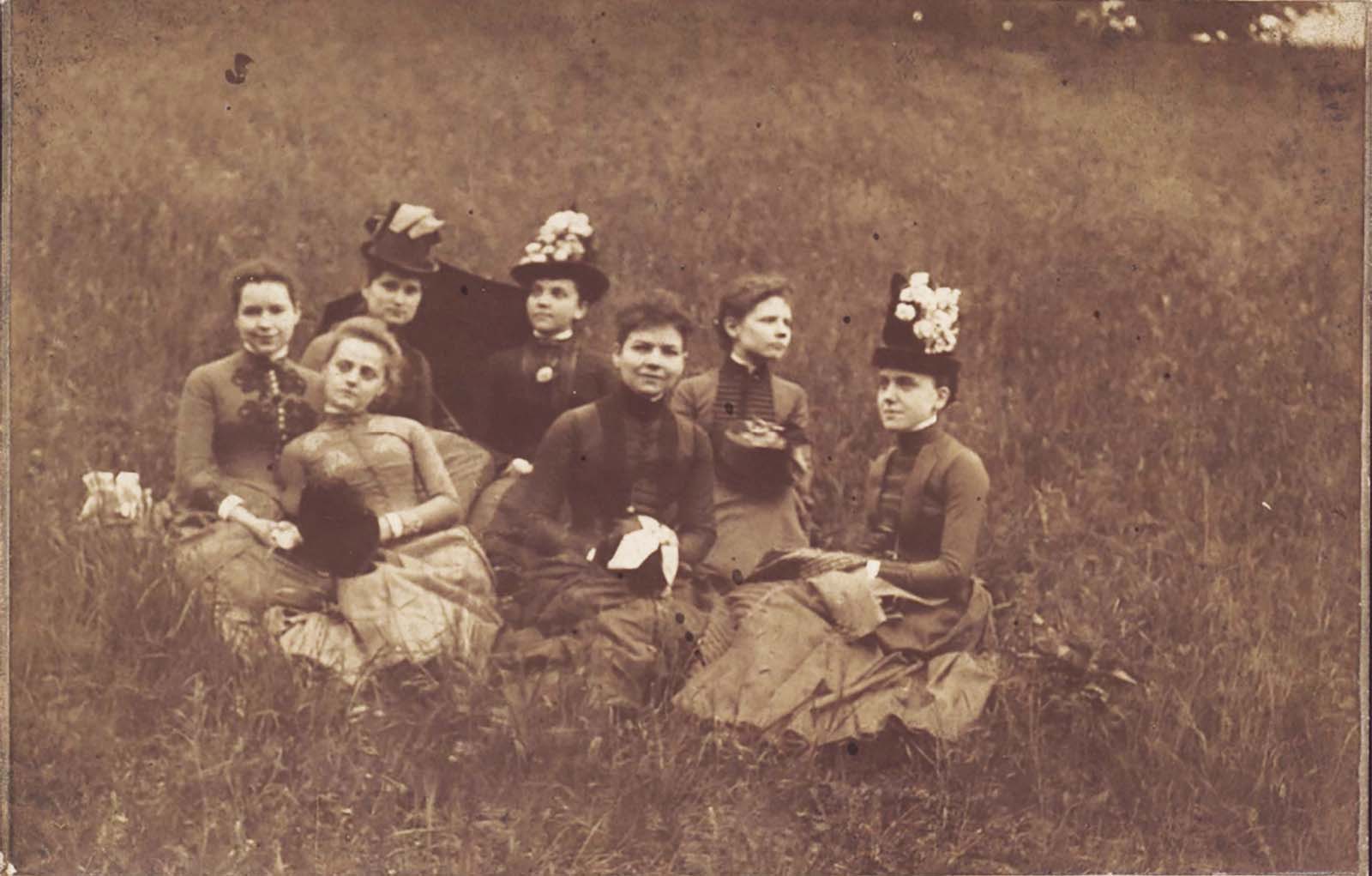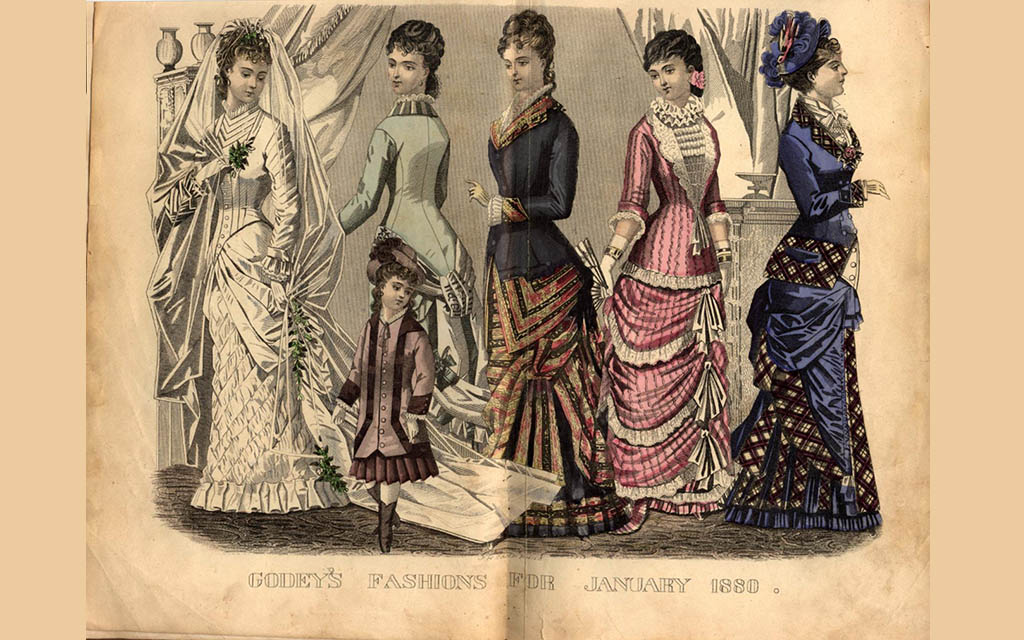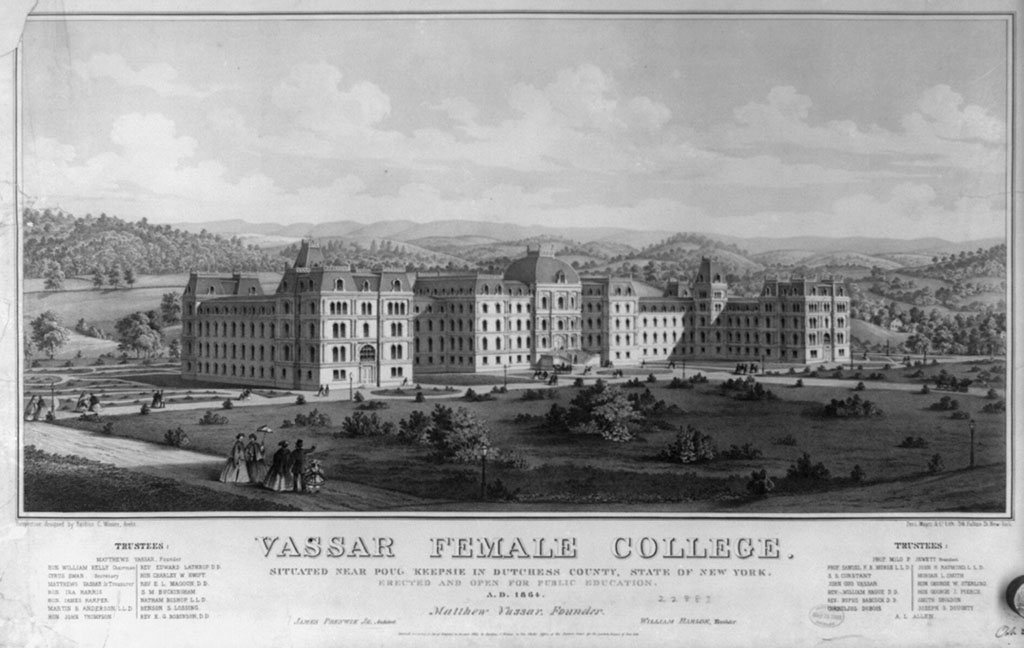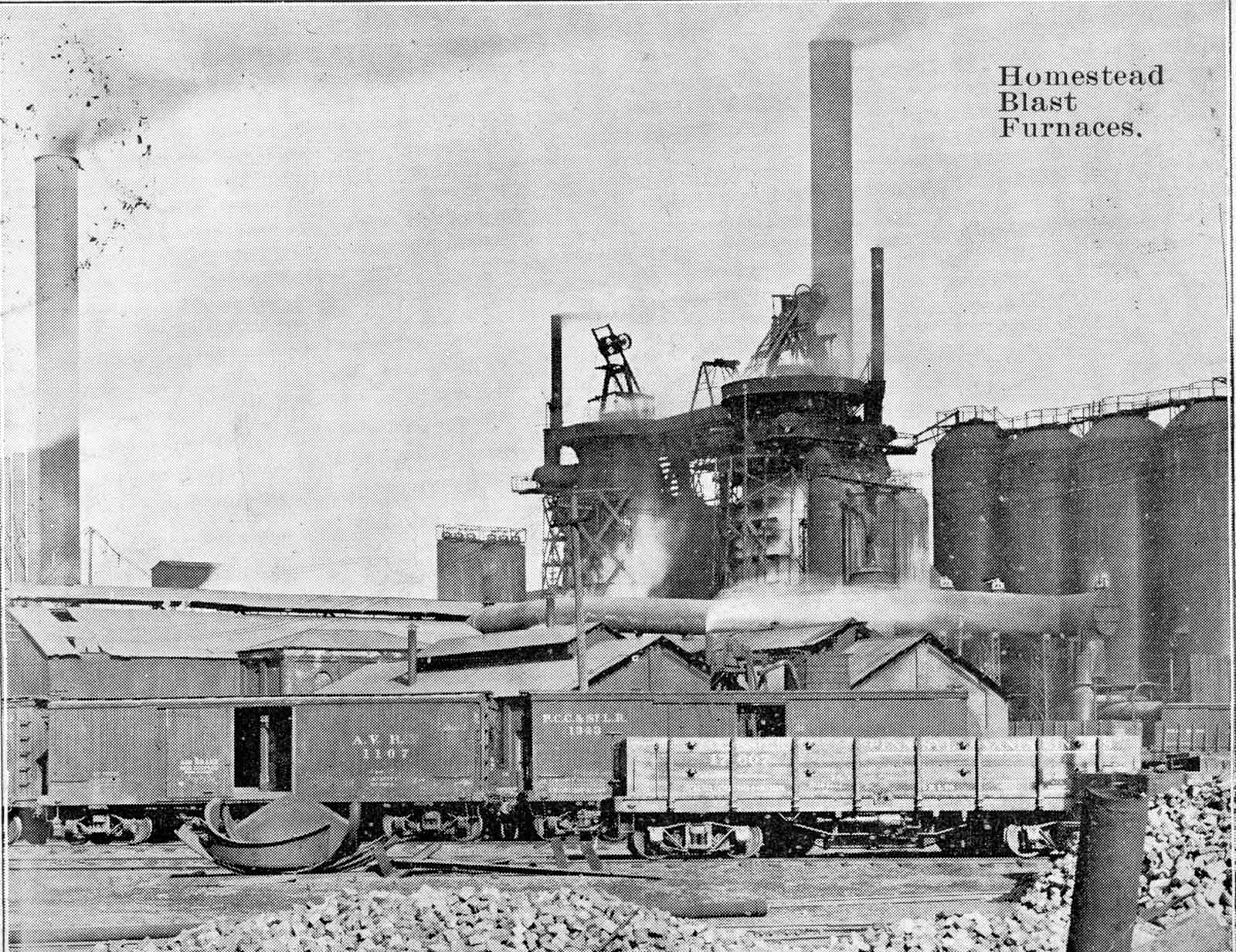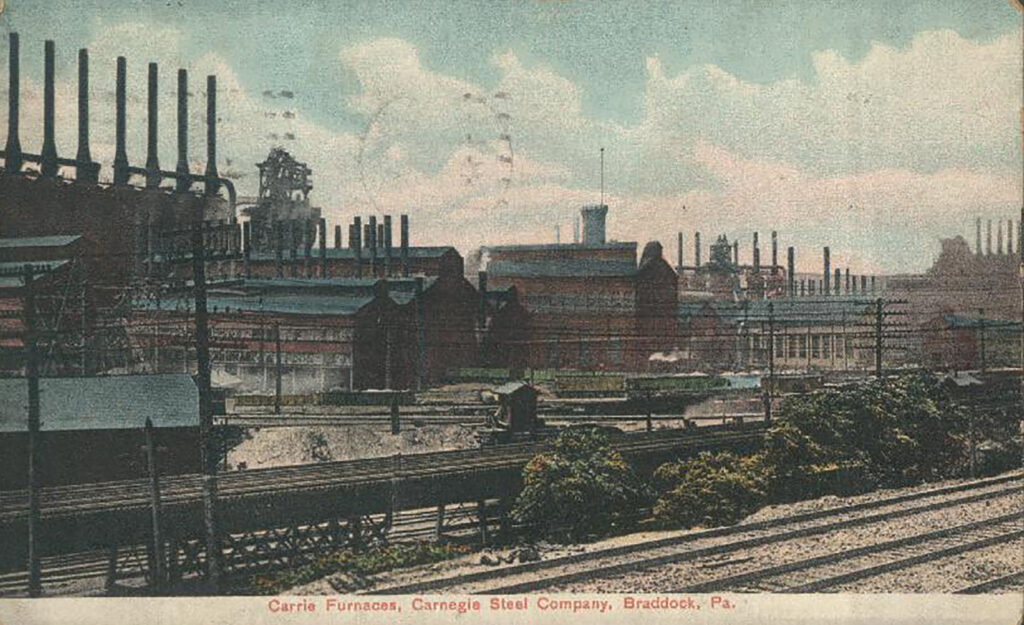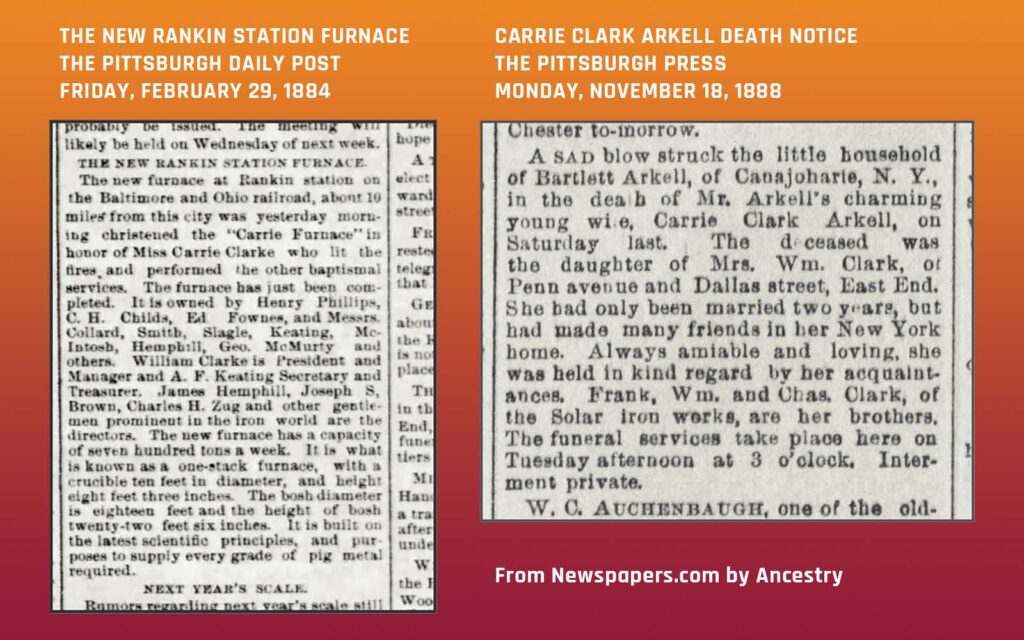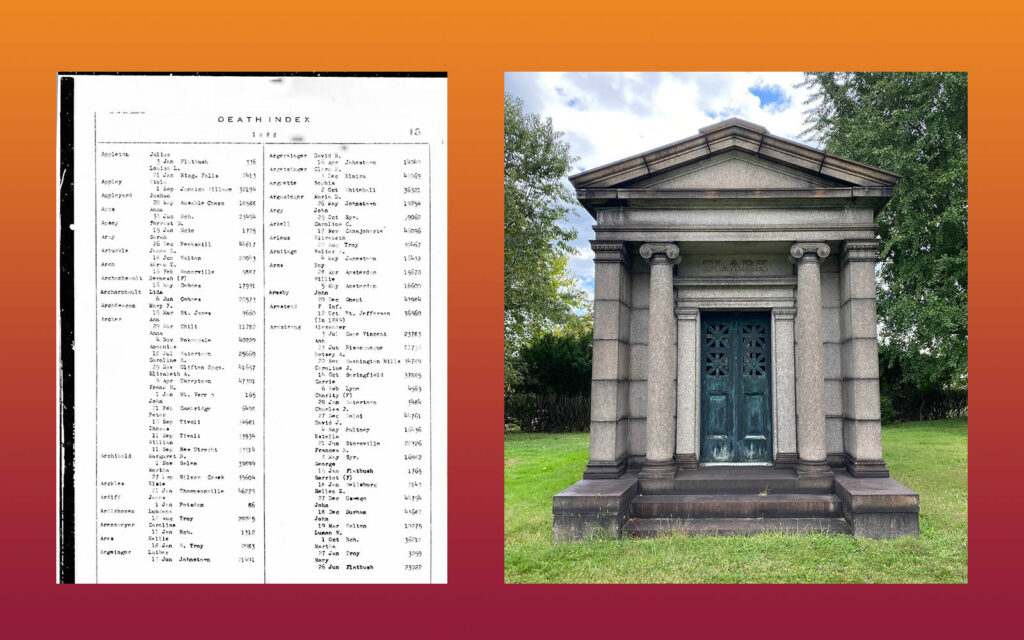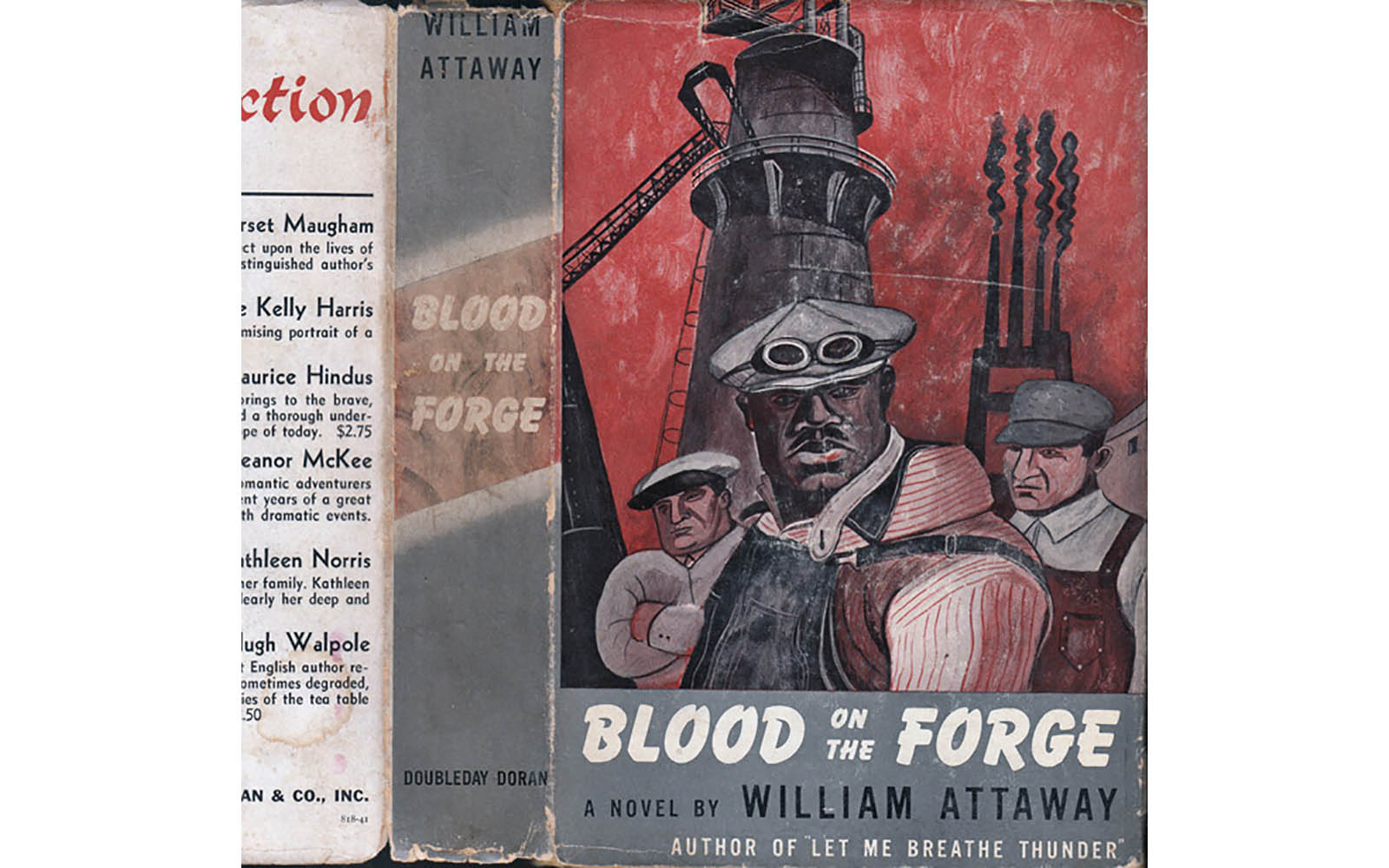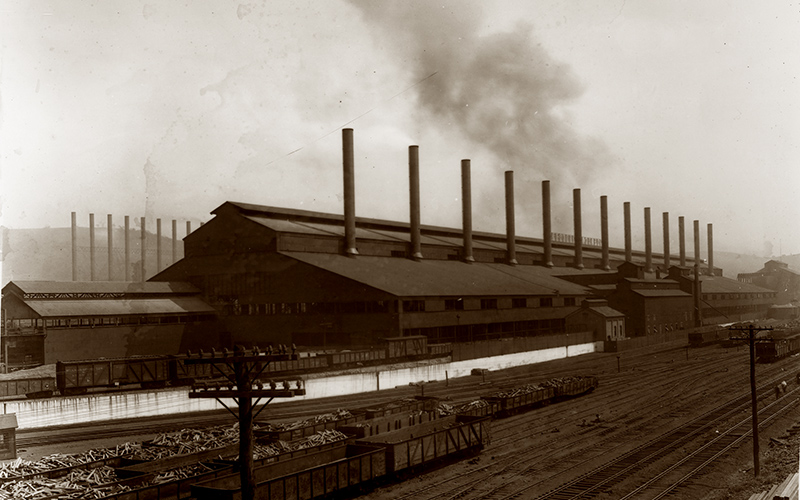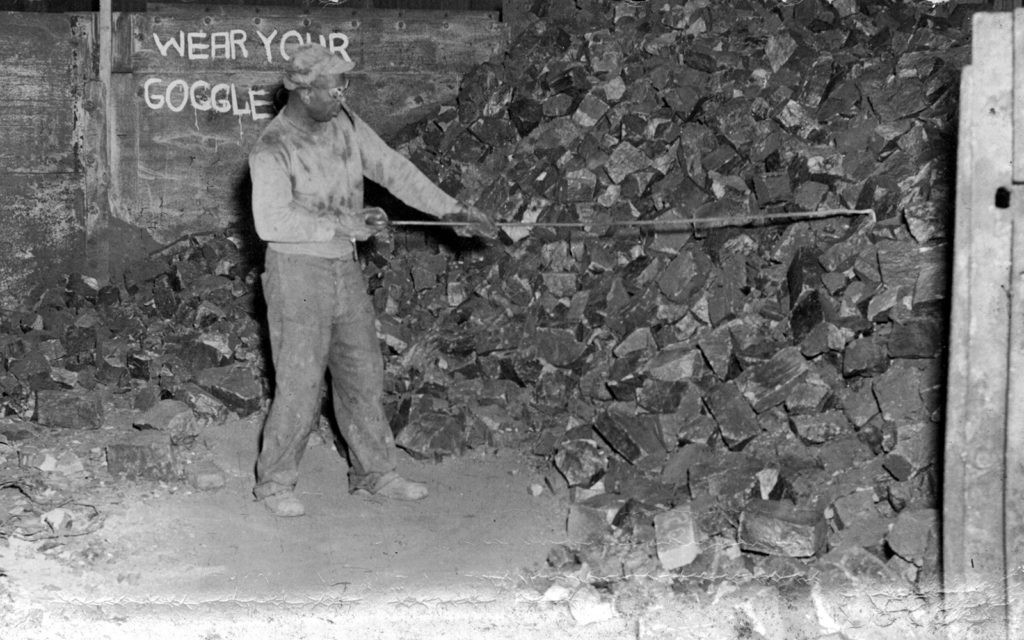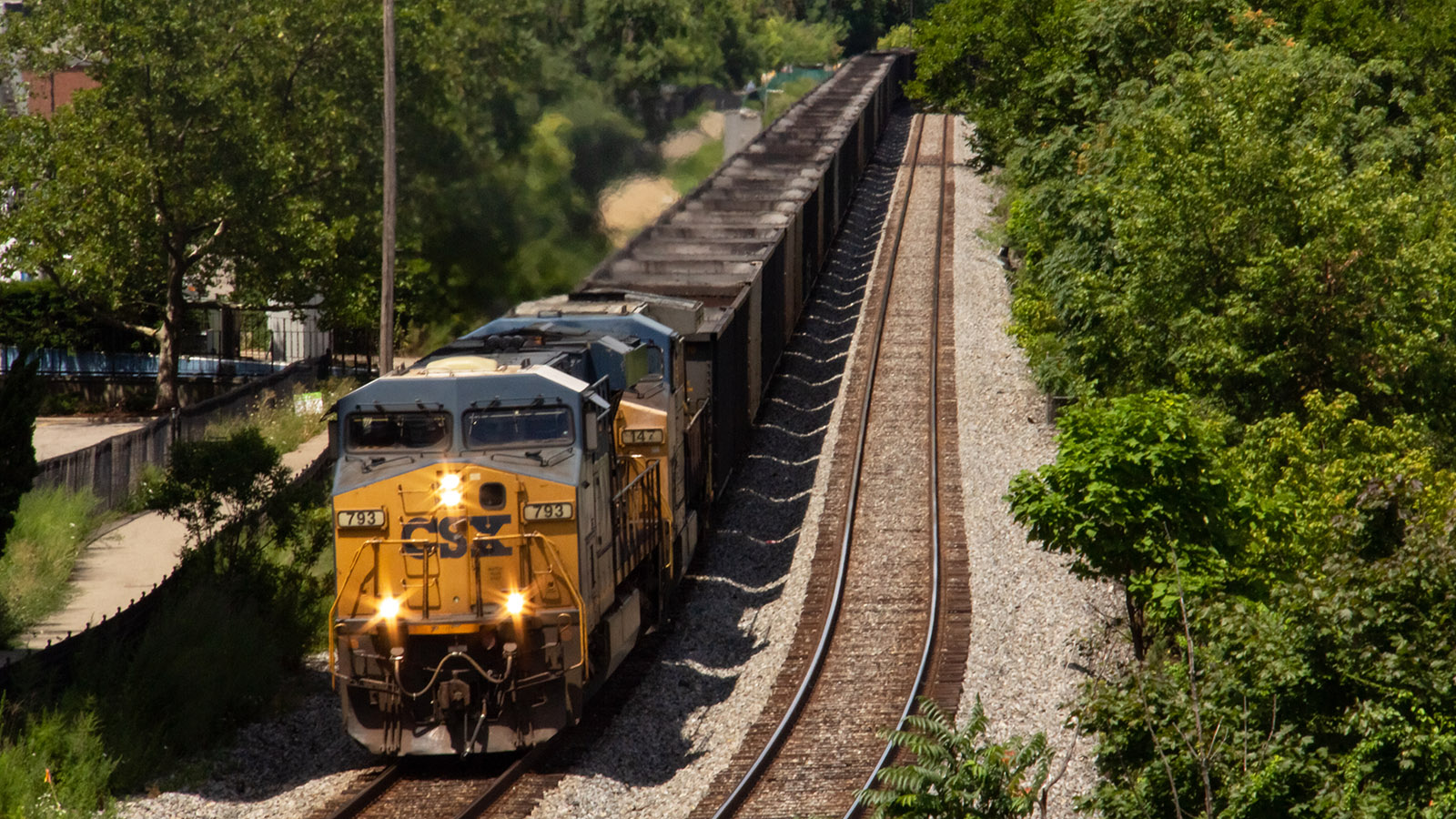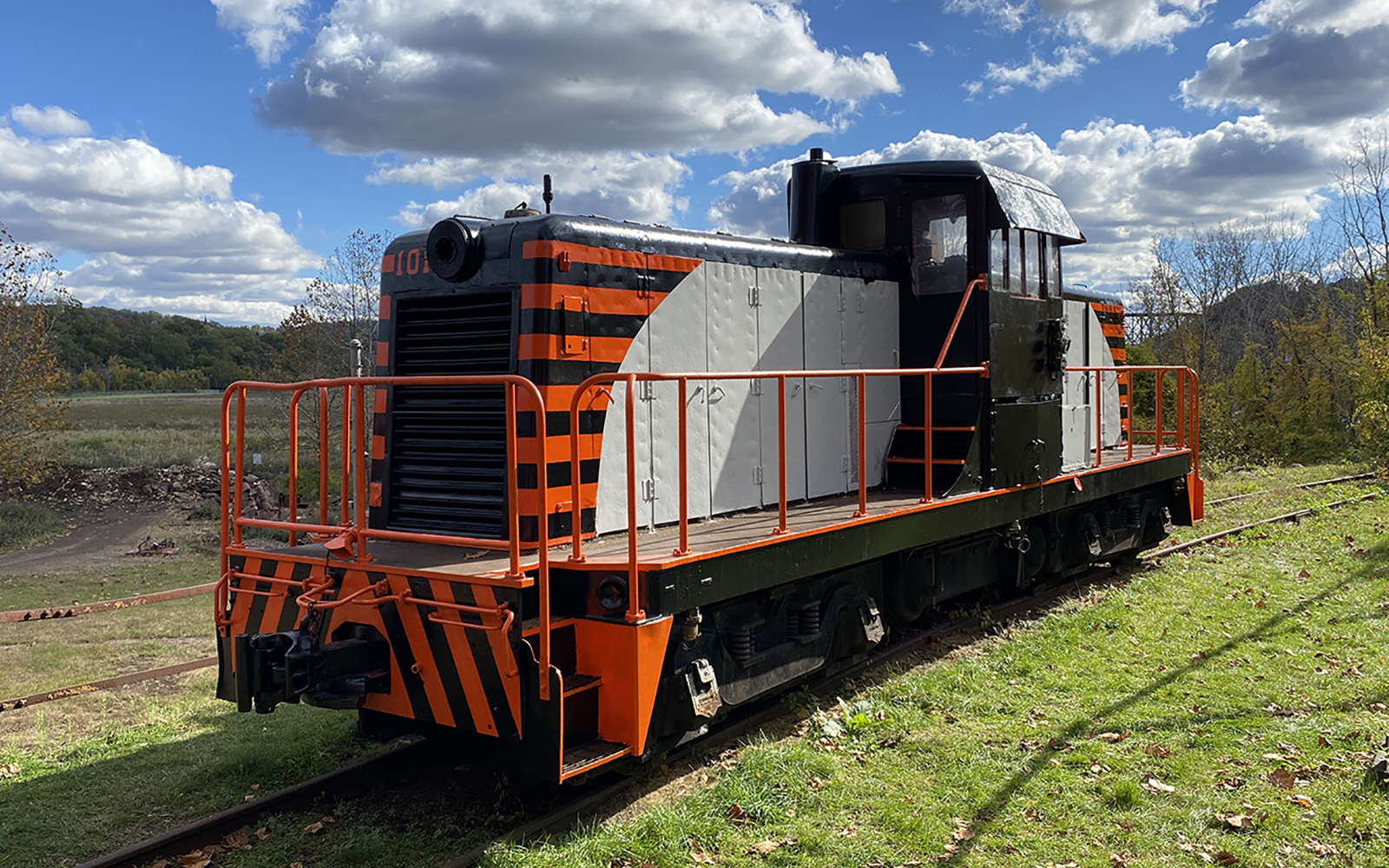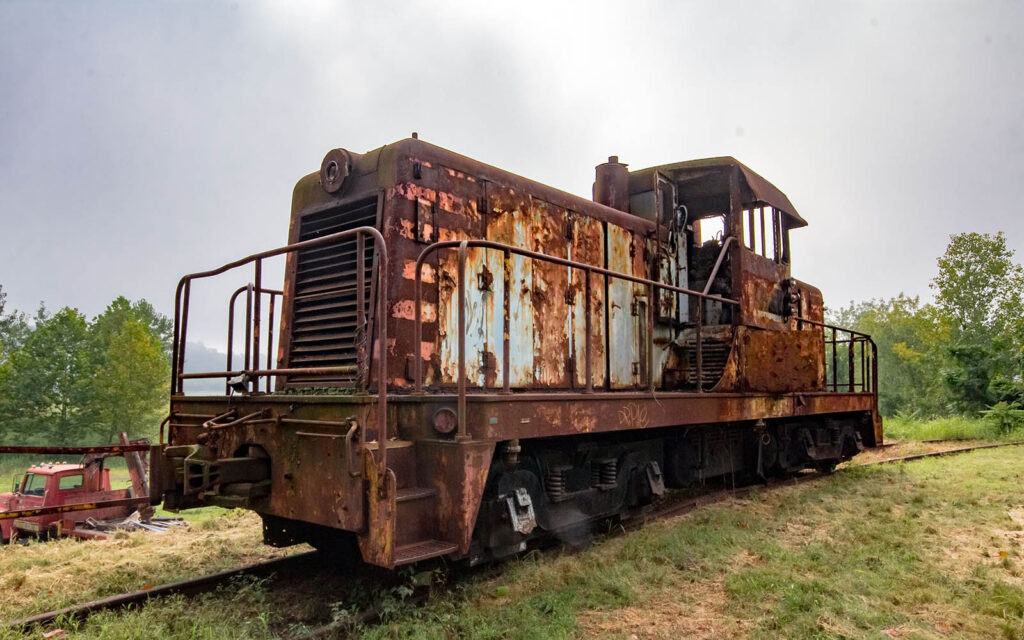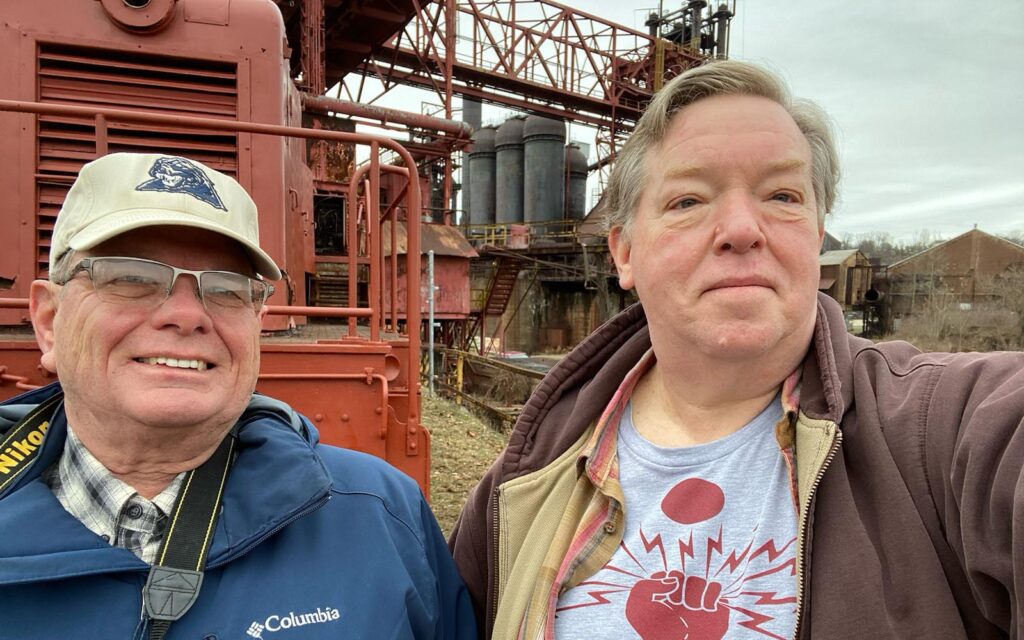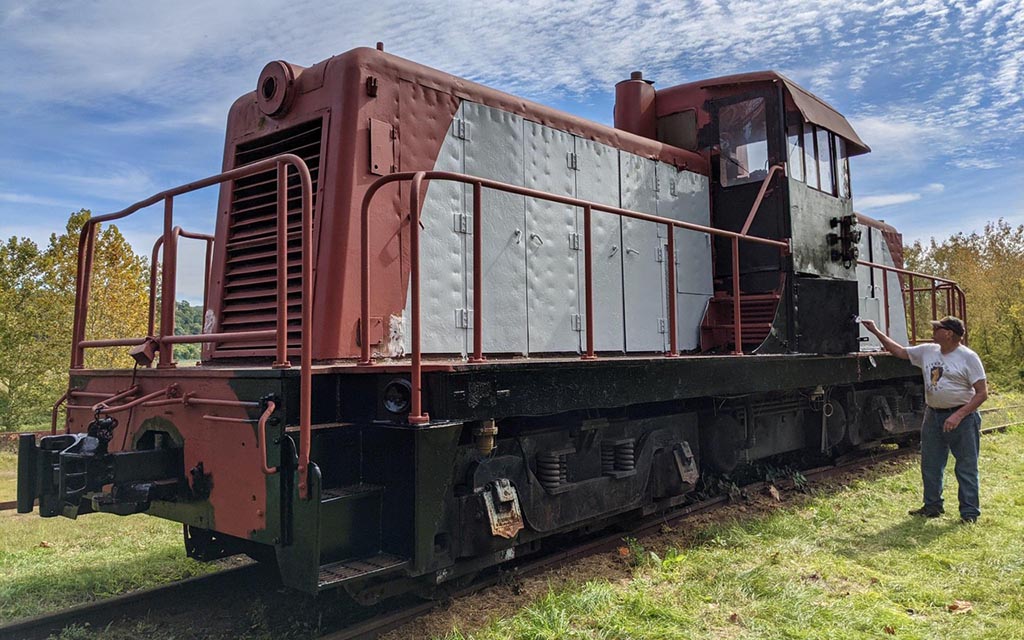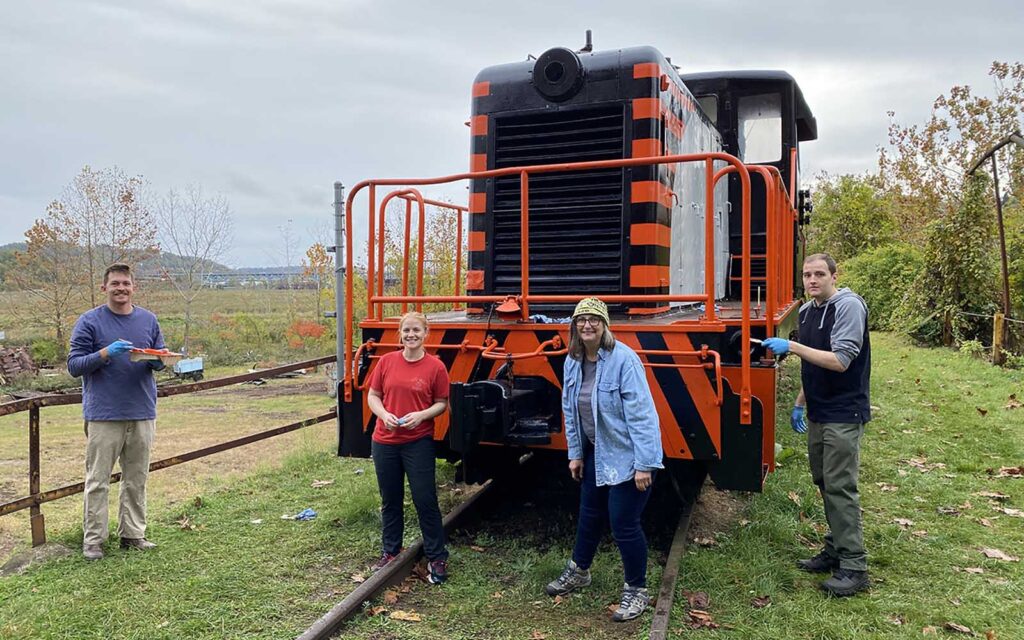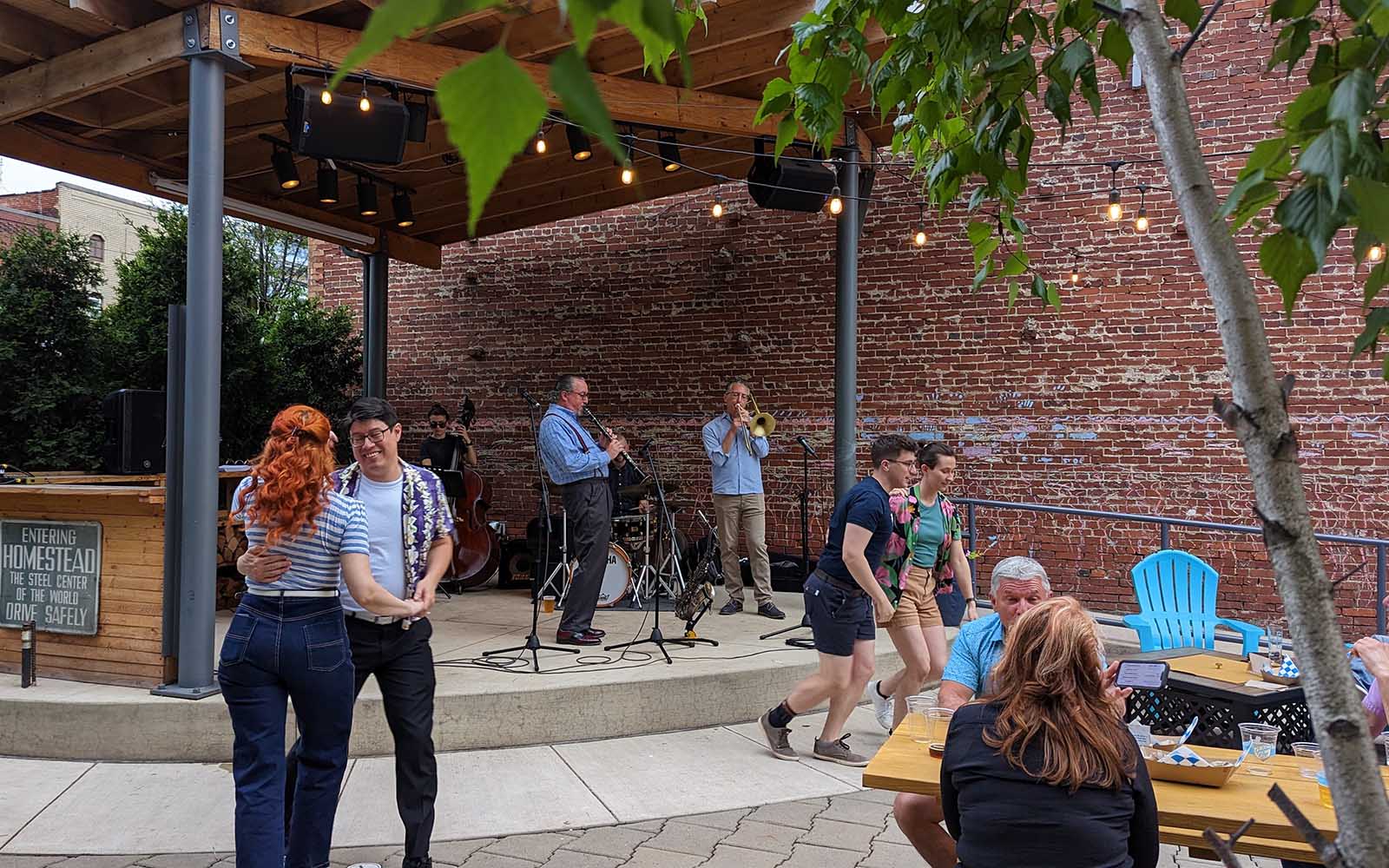
Members of the Pittsburgh Swing Dance Community show off their moves at Golden Age Beer Co. while the Boilermaker Jazz Band performs on a Friday evening in May.
Homestead Live Fridays 2023—A Summer of Music, Arts, and Culture along Eighth Avenue
By Gita Michulka
Homestead Live Fridays is set to kick off on May 26th, and this year the series returns with a particularly special nod to Homestead’s history—live music.
“Music is the core of this event, but also, as a medium, it ties so deeply into what Homestead’s community is,” explains Jon Engel, Rivers of Steel’s Archivist and Heritage Arts Coordinator and the community and program organizer for Homestead Live Fridays. “Homestead residents are very proud of their historical musical output—a lot of great jazz singers, a lot of great gospel singers are from Homestead. They grew up in Homestead, particularly in Homestead’s Black churches, learning to sing from other community members, learning to play their instruments from other community members, and sort of going off into those art scenes as musicians and becoming nationally renowned. For instance, Betty Davis, the funk singer—she was born in Homestead, grew up here, and actually passed away here last year. So there’s just this terrific history of musical performance here in Homestead and a terrific pride in that tradition.”

A celebration of the area’s musical legacy, Homestead Live Fridays has been adding an extra sizzle to the summer since 2019.
Rivers of Steel, which is based in the Bost Building on Homestead’s Eighth Avenue, started the Live Fridays series in 2019 as a way to stimulate interest in the Eighth Avenue corridor for local residents in particular and the greater Pittsburgh community, who maybe only ever equated Homestead with the Waterfront. Funded in part by the Steel Valley Accelerator, the monthly event features local performers, art exhibitions, workshops, vendors, and activities on the final Friday of each month from 6:00 – 10:00 p.m. from May through October.
Though music was always a piece of the programming for Live Fridays, this year Engel and the partnering businesses are particularly excited about drawing a crowd through a full season of dynamic events.
“Focusing Live Fridays around musical performance was both very practical and very meaningful to us,” says Engel. “What we found during the first few years of the series is that music especially is what drives people to the businesses. And that just makes sense when you look at who Homestead’s businesses are. A lot of them have performance spaces built into them already or are already connected to musicians. And we found that when we brought that focus and that idea to the businesses and other partners, they latched onto it, and have taken it and run with it to incredible places. We all found this purpose together, and it’s going really well.”
This idea of a recurring event that showcases not just a handful of Homestead businesses but the Homestead community as a whole has also struck a chord with the partners in and around Eighth Avenue. Venues aren’t just participating to boost their own revenue—they’re genuinely invested in lifting up the whole corridor and celebrating the community where they’re rooted.
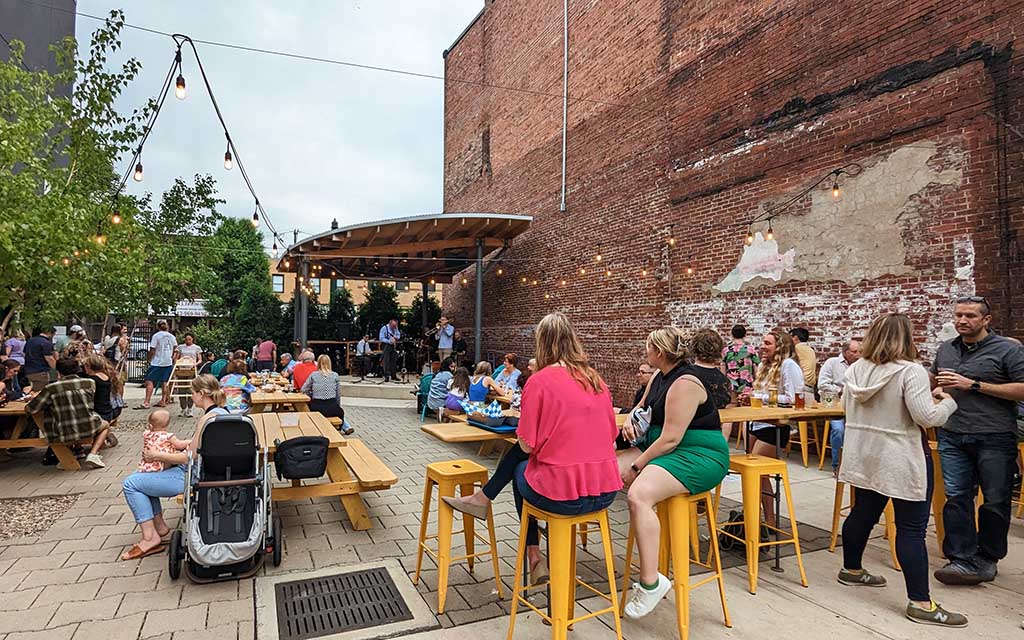
The outdoor space at Golden Age Beer Co. is an inviting for socializing.
“At Golden Age Beer Company, we are thrilled to participate in Live Fridays as we see them as an opportunity to showcase our Homestead community by both increasing participation from our fellow community members and increasing visibility of our neighborhood to visitors from around the city,” says owner Peter Kurzweg. “One of the things that makes us so excited to be a part of Homestead and its renaissance is that we believe that it is happening organically, with stable home prices, and with businesses and people that represent a wide cross section of our diverse community. We believe that programming for Live Fridays should reflect those values, which is why our bookings range from bluegrass to jazz and include live bands and DJs alike.”
Along with Golden Age Beer, participating bars and restaurants who will feature live music during Live Fridays include Blue Dust, The Forge Urban Wine Bar, Capri Pizza & Brew Pub, Eon Bar & Grill, and Voodoo Brewing Co. Despite their close proximity, there is a spirit of collegiality rather than competition—a main goal of Rivers of Steel during the planning process.
“Helping the venues work together to create an event that is a benefit to all of the Eighth Avenue corridor—that’s the dream for this series,” Engel notes. “Really what matters is that we get everyone into a collaborative space together. It’s a dialogue, where everyone comes in with their own already developed skills and interests for their business and their organization. And then, you know, we either work together on some group idea or we are very respectful of each other and looking out for one another.”
And their collaboration pays off. The array of live music and arts programming is a big draw, and a benefit for local artists, too.
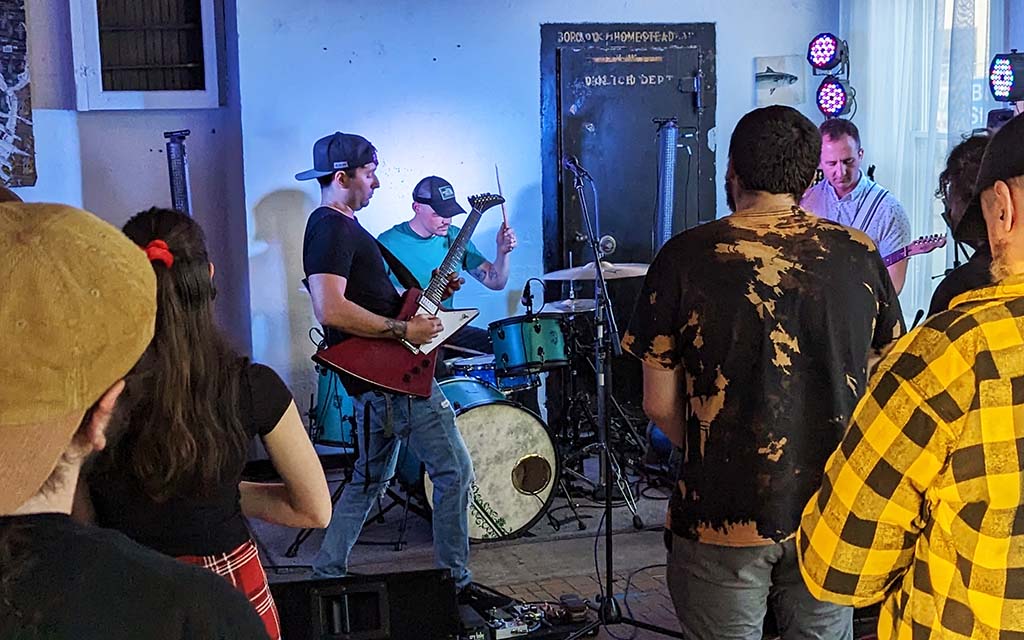
Voodoo Brewing Company’s Homestead Pub has added a dedicated space for local musicians to perform.
“Live Fridays have been a huge boost for our business and have been a great way to support local artists and offer entertainment for this community to enjoy,” observes Ray Vellky, Events Coordinator at Voodoo Brewing Co. “We’ve greatly enjoyed the opportunity to support local musicians and artists by offering our venue up for events and shows. In terms of the kind of music we’re bringing to the space this year, we’ve been casting a wide net across our events in order to represent a wide variety of genres and artists.”
Carl Valenti, who co-owns Eon Bar & Grill with Mike Reid, echoes these sentiments. “Live Fridays have been amazing for Eon and the area. Offering live music through bands and artists has brought some great energy. We have been able to see new faces from the area come in for these bands and really hope it continues to grow so we can continue to offer live music options. There are so many talented musicians in the area, we look for driven and diverse talent specializing in soul and R&B to book for our live music nights. Any way we can showcase and make it work for everyone involved—we truly enjoy doing it since there aren’t many small venues that are able to offer it at all.”
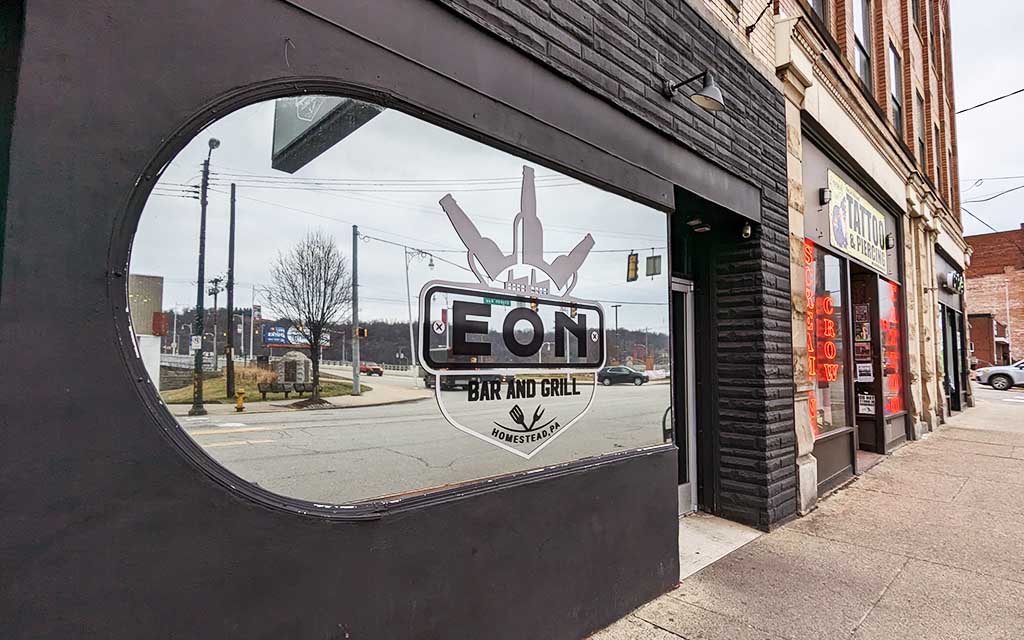
Eon Bar & Grill’s logo gives a nod to the area’s steel heritage, as its mirrored window reflect the Homestead Grays bridge.
Being rooted in a community with such special ties to the gospel and jazz singers it produced is not lost on these venues, either. Eon’s interest in booking soul and R&B acts, along with Golden Age’s interest in local jazz musicians, and Voodoo Brewery’s focus on local rock, provides unique aesthetics distinct from one another, but which all tie back to those shared roots.
And Engel is eager to point out that part of the magic of Live Fridays—what sets this series apart from other events in the city—is the Homestead community itself.
“The focus of this series is on all of the citizens of Homestead. A lot of those are local businesses, like restaurants, bars, music venues, and art galleries on and around Eighth Avenue. But even beyond that—the people who have a physical presence on the street. You get a lot of involvement from individual community members who just care about their neighborhood and want to do something cool in it.”
“People have this desire to participate even when it’s not directly related to their business,” he continues. “Homestead’s community partners all have such unique and creative ways of participating and of doing things that they want to see happen in Homestead.”
Heading into its fourth active year, the Live Fridays series seeks to strengthen and deepen the ability for local venues to take ownership of showcasing both the arts and the community, and the partnering businesses are jumping at the chance.
“We believe that Homestead can become a regional epicenter for the arts and for artists, and our commitment to hosting no-cover-charge live music (while also paying musicians well) every weekend is central to our mission here at Golden Age,” notes Kurzweg. “We love Live Fridays as it gives us an opportunity to promote our commitment to that cause.”

To kick off the 2023 Homestead Live Fridays series on May 26th, Golden Age Beer has booked The Shameless Hex, a string band based out of Pittsburgh whose music is a fusion of bluegrass, rock, and folk, all done in an Appalachian string band style. Voodoo Brewing Co. will feature a show by Crombie, a jazz / funk / Latin instrumental trio from Pittsburgh, and Eon Bar & Grill will feature live music by Dennis Garner Jr. & Tempo Noir featuring Ms. Tenaj.
KSD & The Radio Room will also be hosting a closing reception for Gary Henzler Allen’s art show, Microcosm, with live music by Akrasia, Joe from Creedmoors, Berry Breene & friends, and 3rd Set Jerry.
ACORN ANEW will host a community barbecue with live music by the Difficult Times Jazz Band. Amity Harvest Community Garden will have acoustic rock by Kevin Belonzi, and Duke’s Upper Deck Café will feature live spray painting by Scott Brozovich.
And at Eberle Studios, Pittsburgh Sound + Image will launch their Essential Pittsburgh series, which explores our region’s film history by spotlighting local artists and their films created in the 1960s through the 1990s, beginning with award-winning filmmaker Billy Jackson.
The Glitterbox Theater, Dorothy Six, Live Fresh, Juicery, Millie’s Homemade Ice Cream, and Retro on 8th will also participate in the 2023 Live Fridays series.
Kicking off May 26 and running monthly through October, Homestead Live Fridays will occur in multiple venues throughout the area’s Eighth Avenue business district, including Eon Bar & Grill, Voodoo Brewing Co., and Golden Age Brewing Company, among others. Presented by Rivers of Steel and the Steel Valley Accelerator, the event series features local performers, art exhibitions, workshops, vendors, and activities on the final Friday of each month from 6:00 – 10:00 p.m. Grab a drink or bite to eat and check out some of the region’s best local live music! For details and updates, visit facebook.com/HomesteadLiveFridays.
 Gita Michulka is a Pittsburgh-based marketing and communications consultant with over 15 years of experience promoting our region’s arts, recreation, and nonprofit assets.
Gita Michulka is a Pittsburgh-based marketing and communications consultant with over 15 years of experience promoting our region’s arts, recreation, and nonprofit assets.

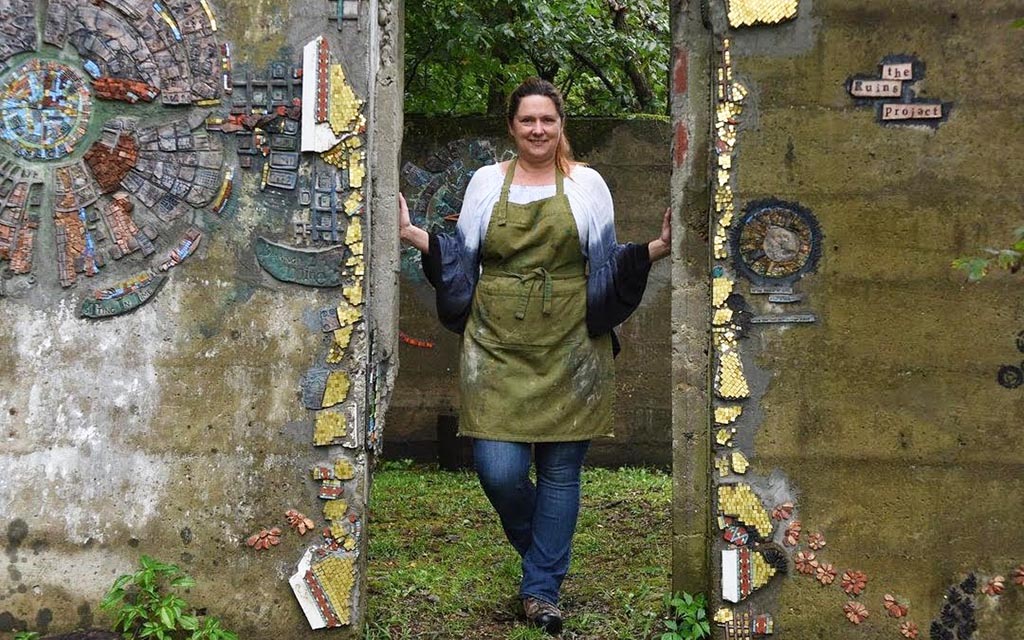
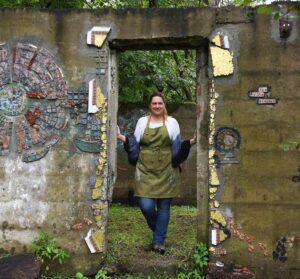
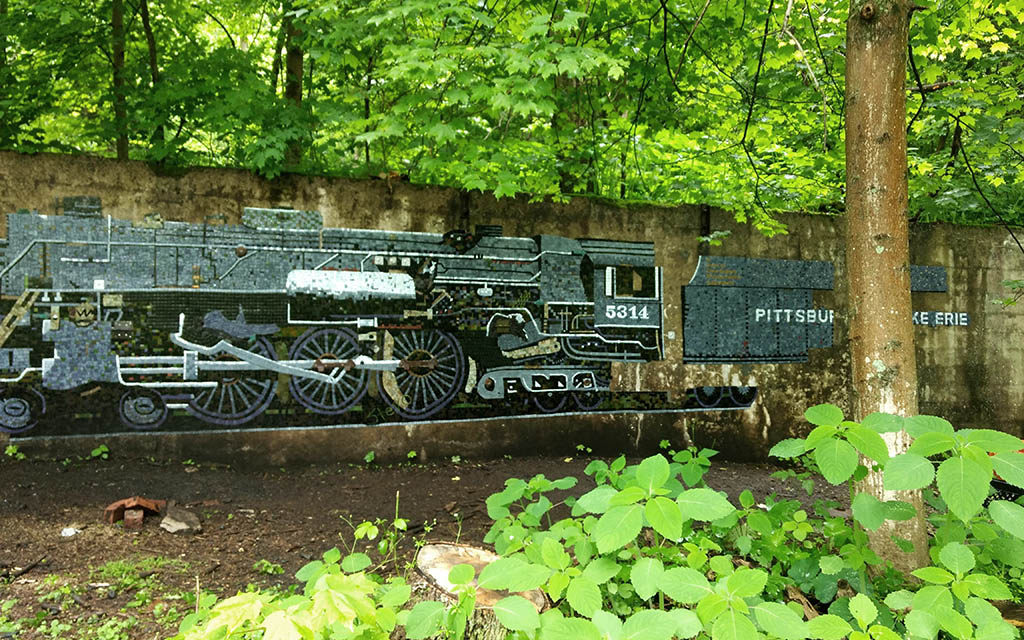

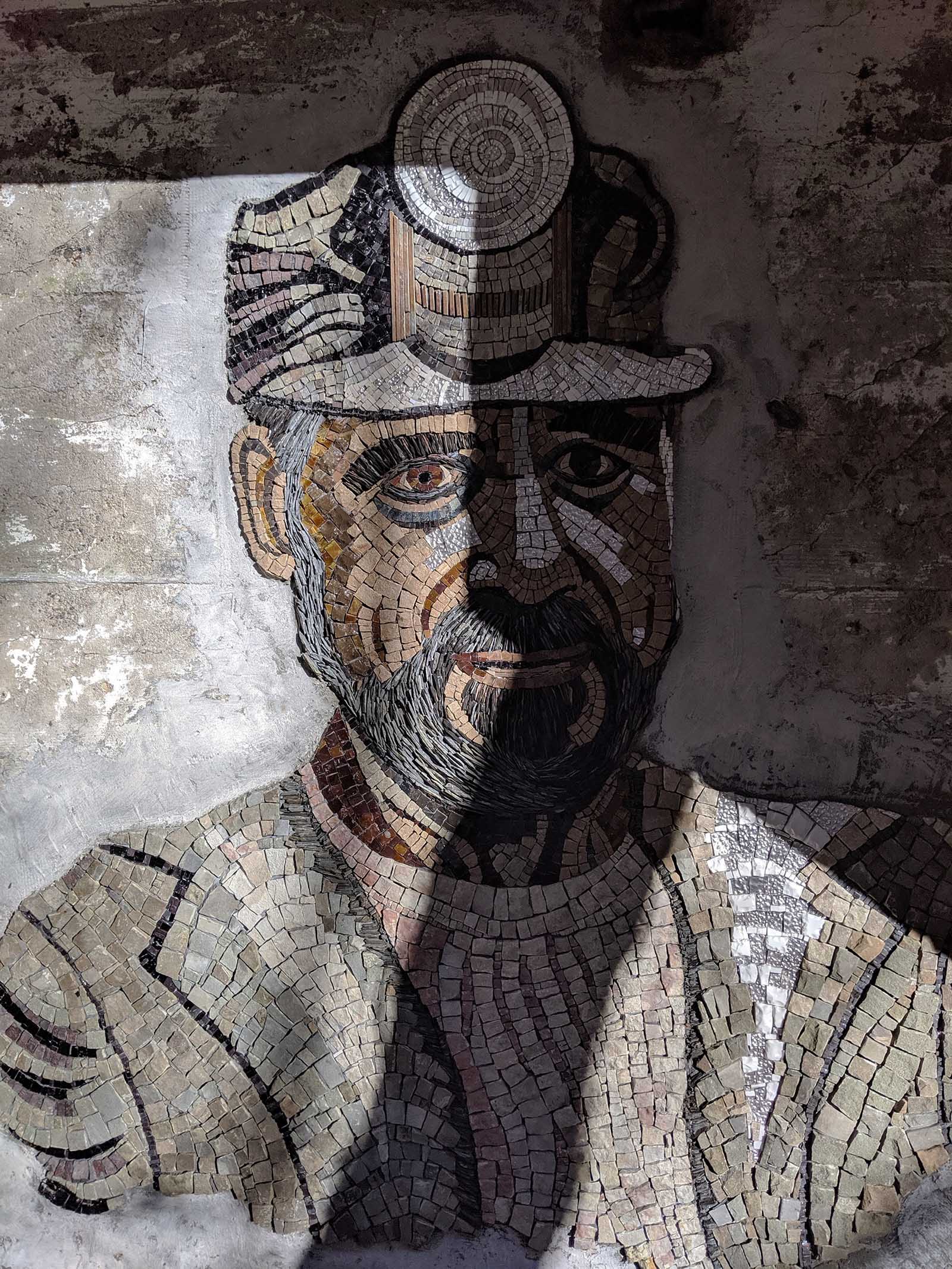

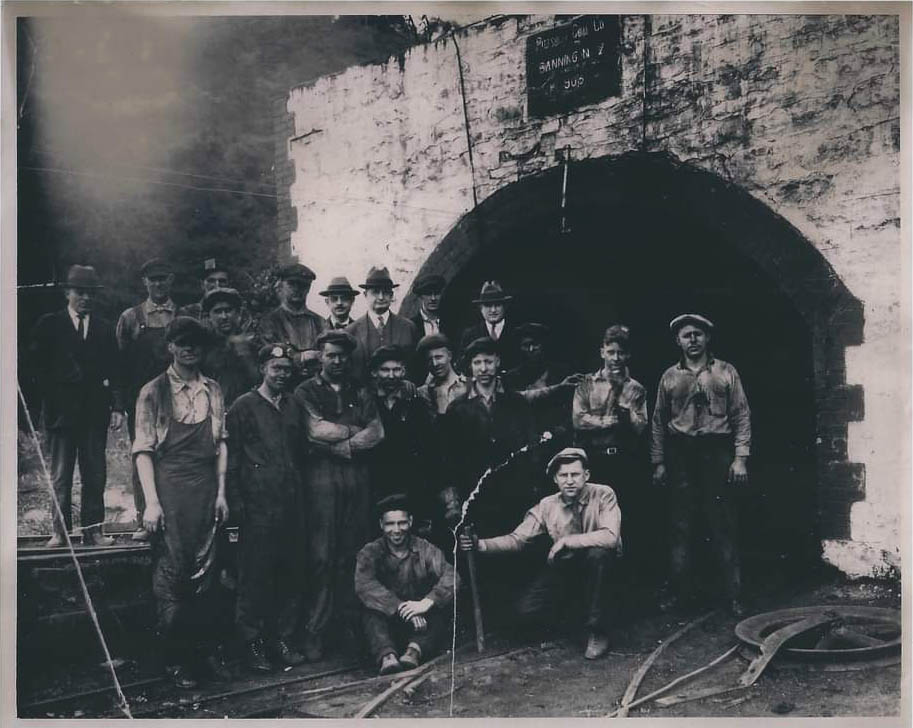

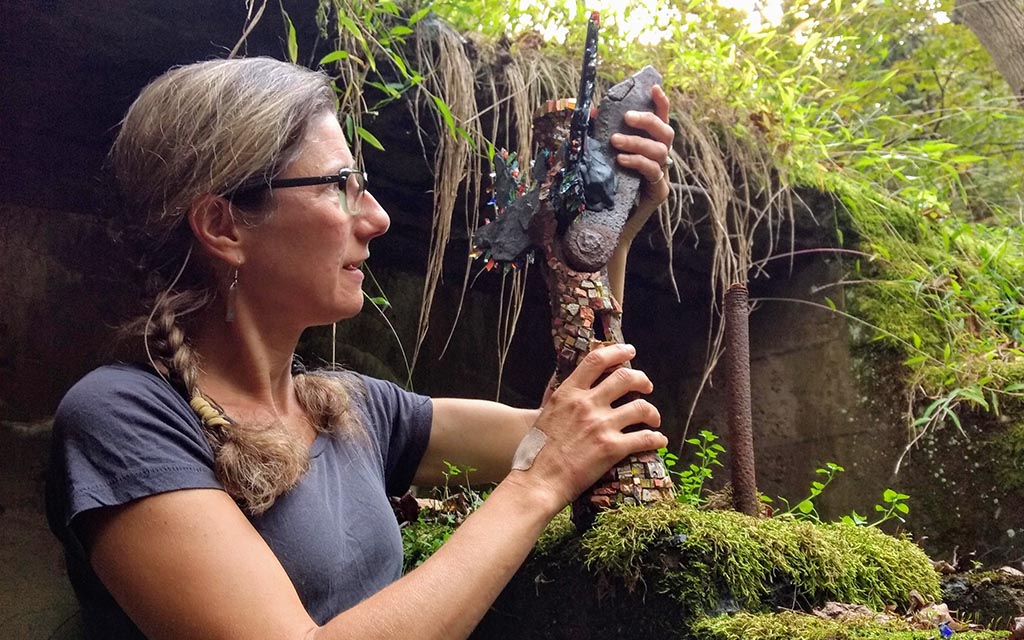
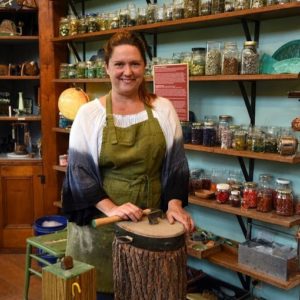 Rachel Sager, The Storytelling Mosaicist, has been making mosaic, writing about mosaic, speaking about mosaic, and teaching mosaic for over twenty years. Her signature forager and intuitive teaching styles have changed how mosaic is experienced and have helped build on the golden age that the art form is enjoying in these exciting decades.
Rachel Sager, The Storytelling Mosaicist, has been making mosaic, writing about mosaic, speaking about mosaic, and teaching mosaic for over twenty years. Her signature forager and intuitive teaching styles have changed how mosaic is experienced and have helped build on the golden age that the art form is enjoying in these exciting decades.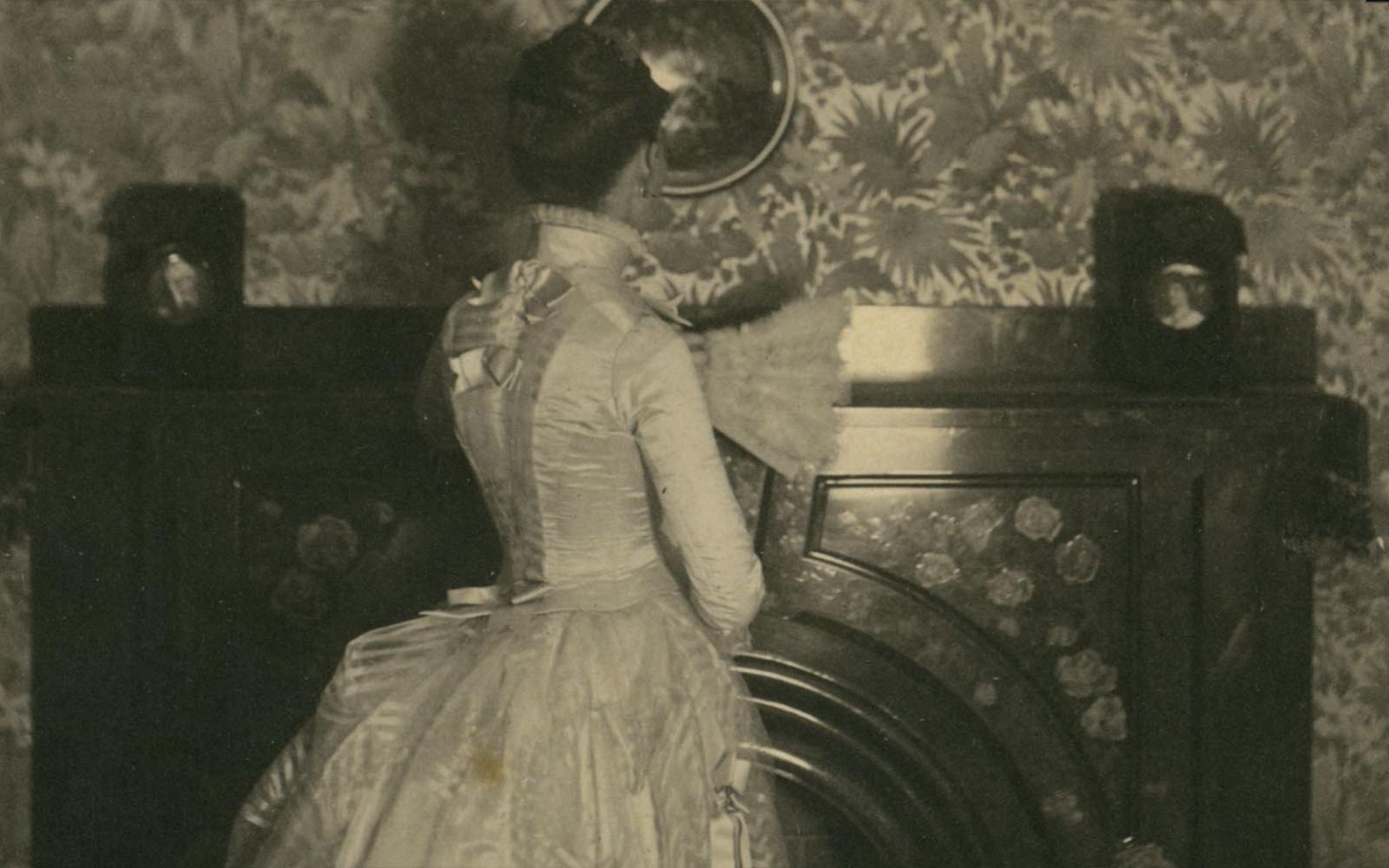
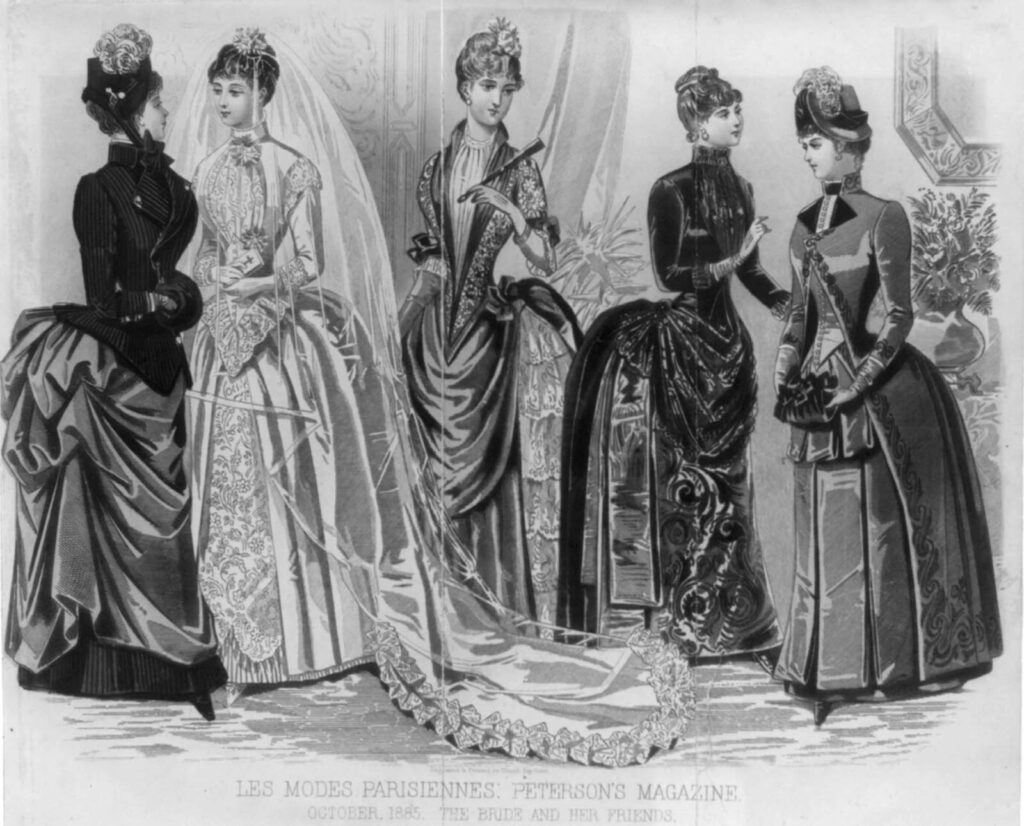



 Dr. Kirsten L. Paine is an educator and researcher with more than a decade of experience working in higher education. She started working for Rivers of Steel in 2017 as a tour guide at the Carrie Blast Furnaces National Historic Landmark and was inspired by the mission to preserve such a national treasure held in public trust. Kirsten is committed to the work of public humanities education in her role as Site Management Coordinator and Interpretive Specialist. By creating and facilitating public programs that make the National Heritage Area’s history come alive for the community, she believes in archival study and teaching from primary sources as vital community resources.
Dr. Kirsten L. Paine is an educator and researcher with more than a decade of experience working in higher education. She started working for Rivers of Steel in 2017 as a tour guide at the Carrie Blast Furnaces National Historic Landmark and was inspired by the mission to preserve such a national treasure held in public trust. Kirsten is committed to the work of public humanities education in her role as Site Management Coordinator and Interpretive Specialist. By creating and facilitating public programs that make the National Heritage Area’s history come alive for the community, she believes in archival study and teaching from primary sources as vital community resources.